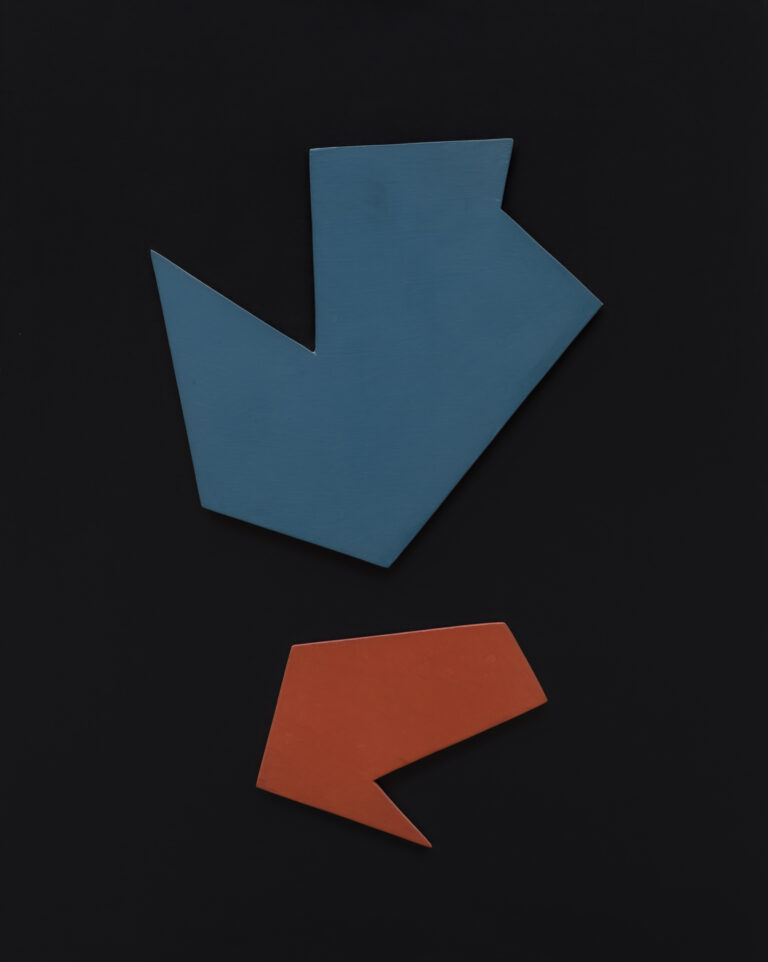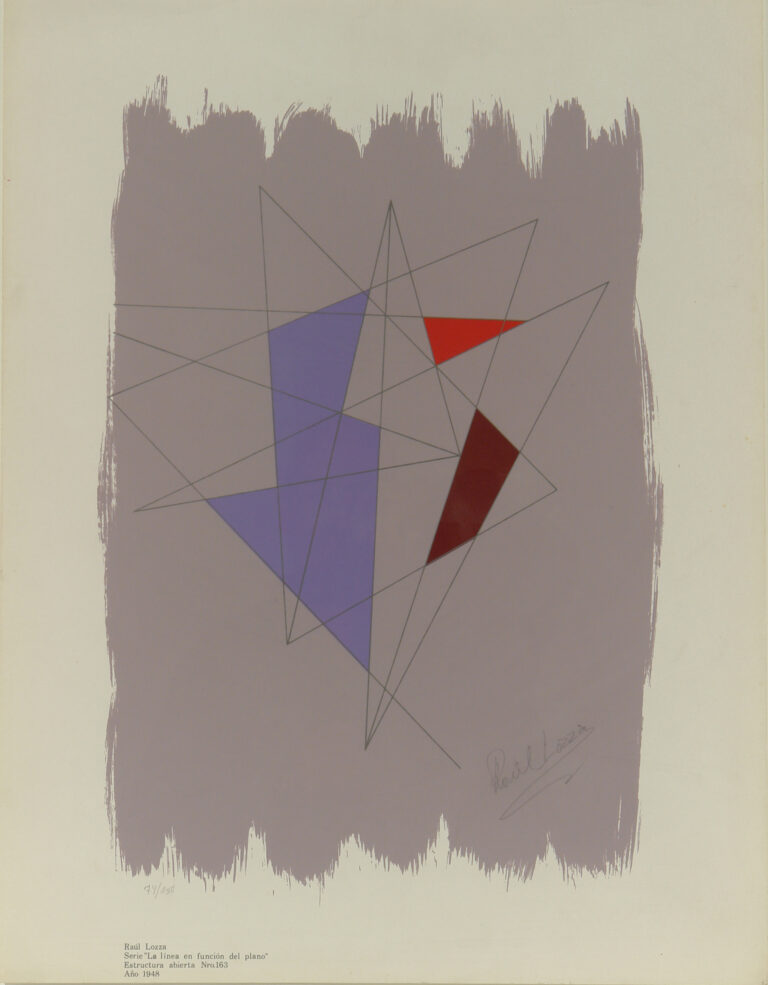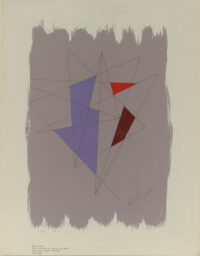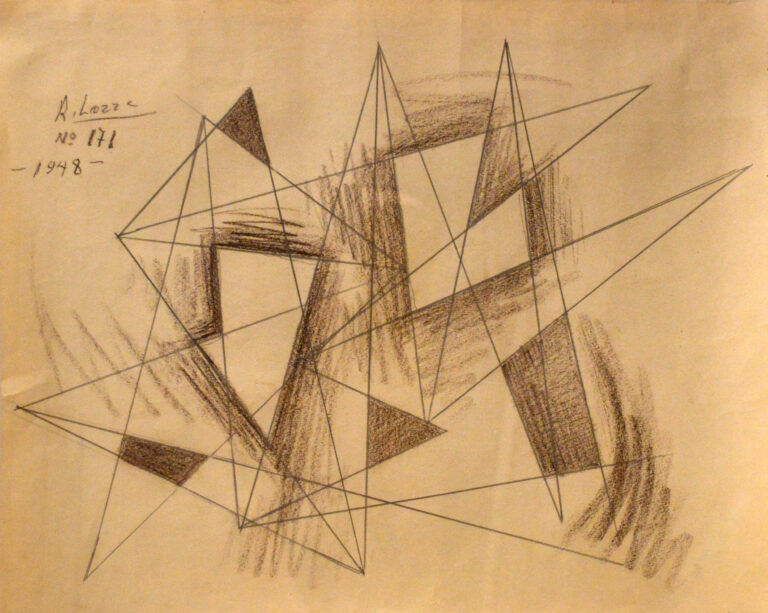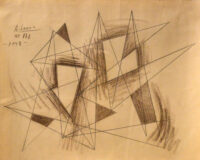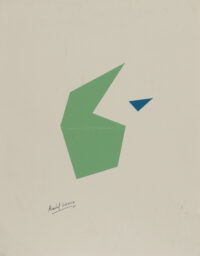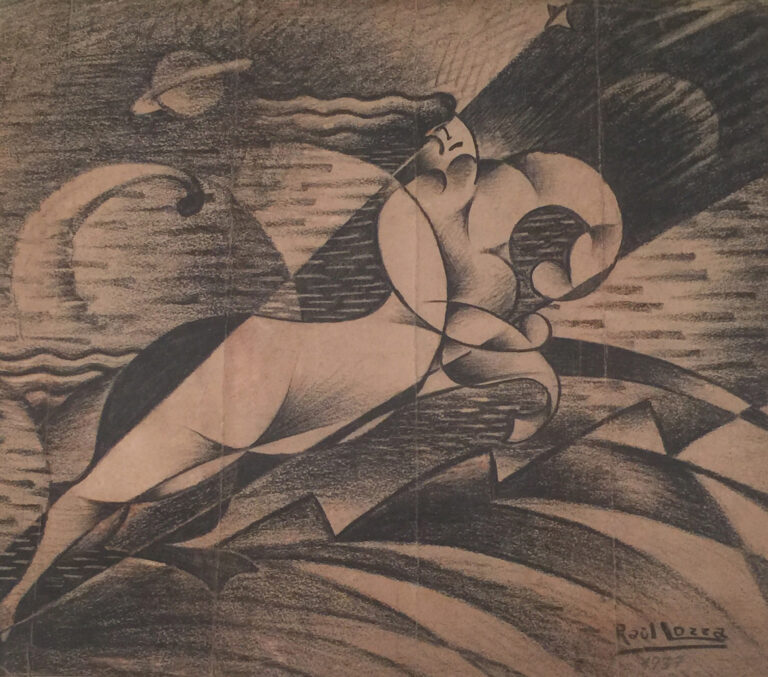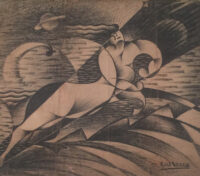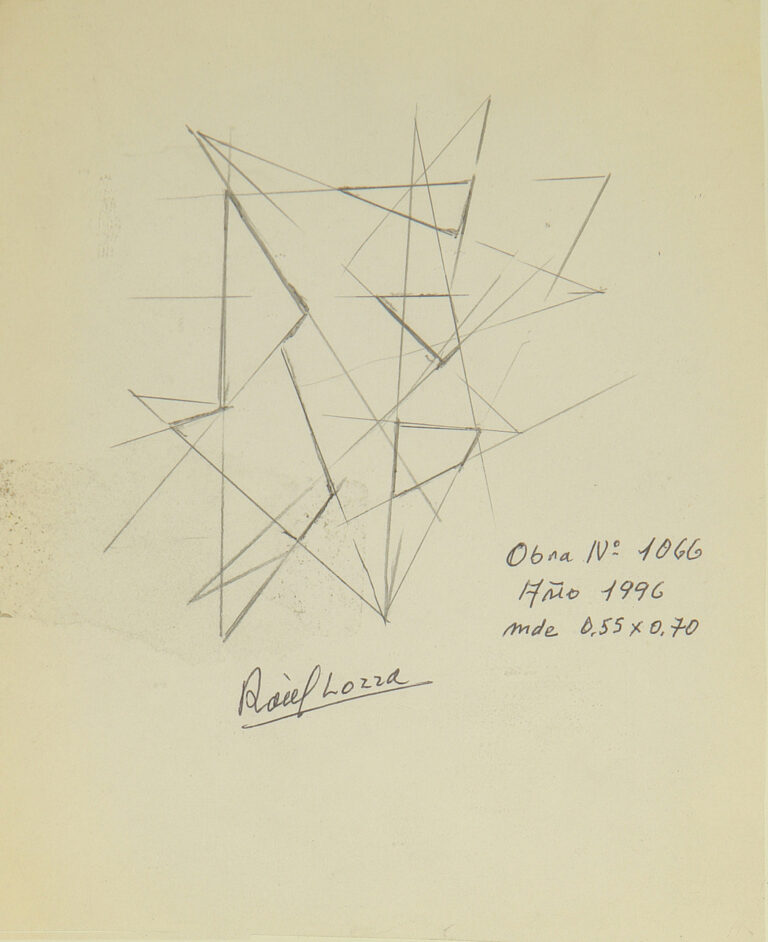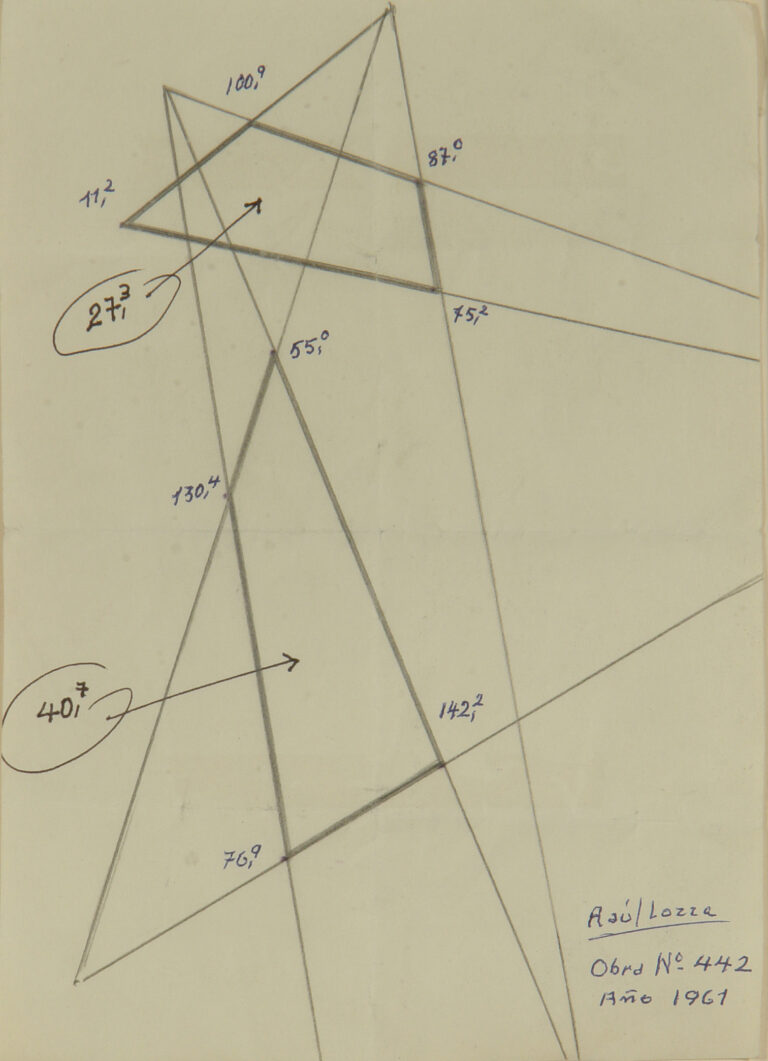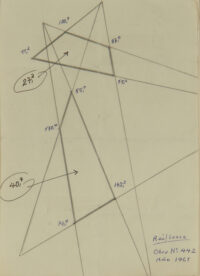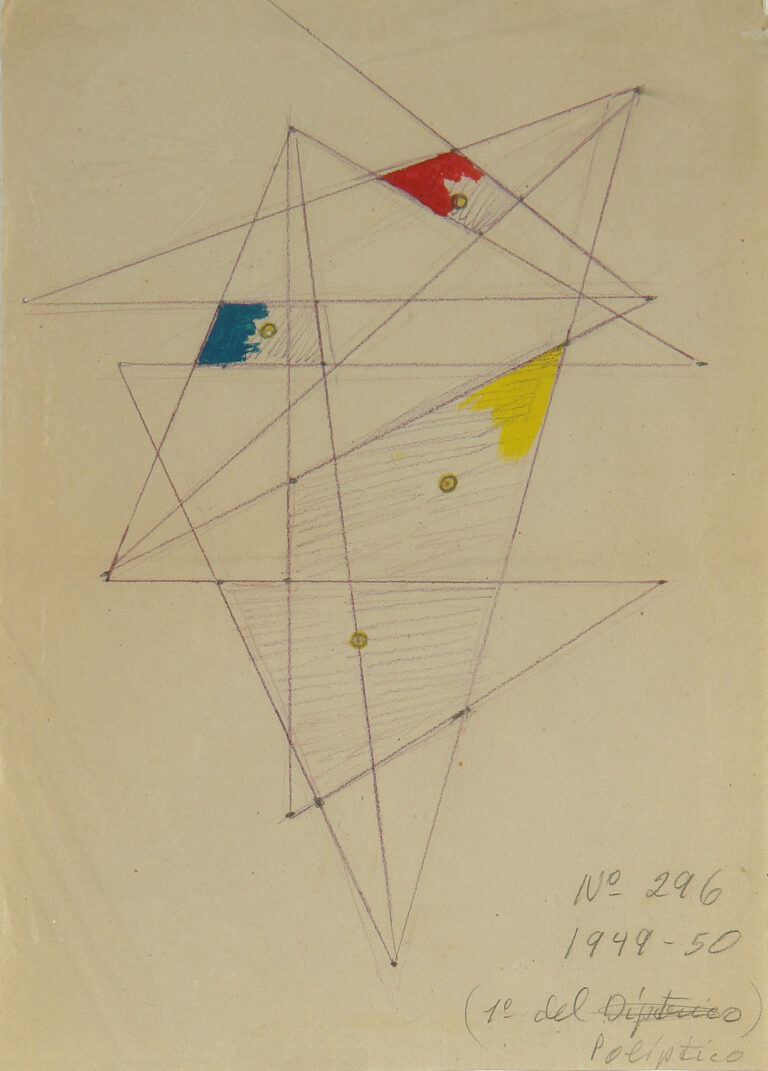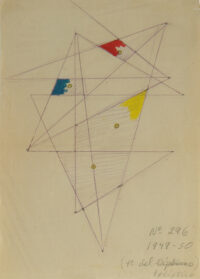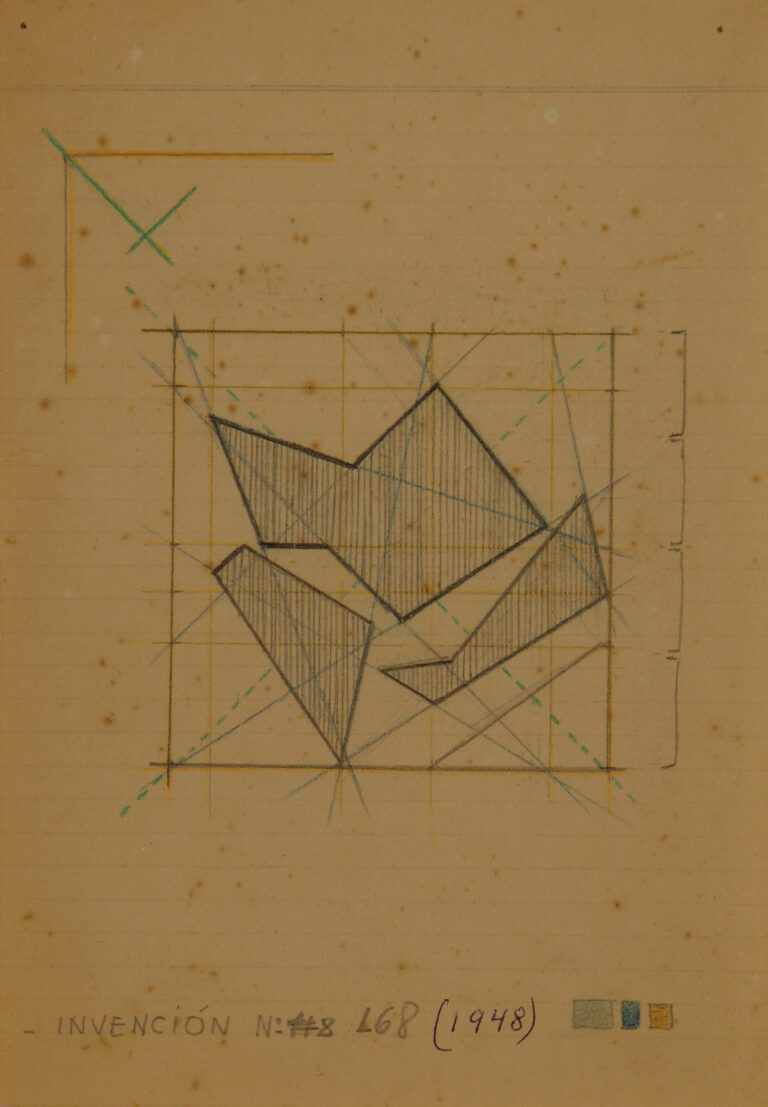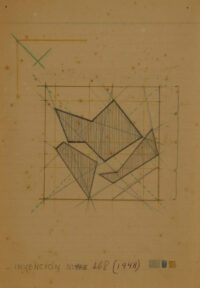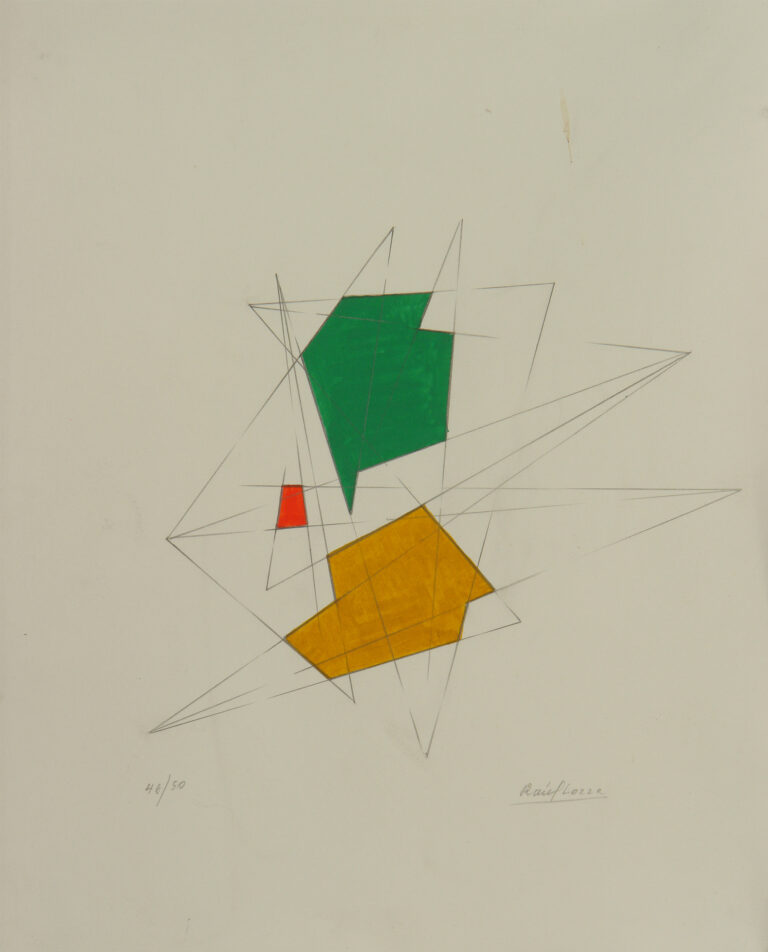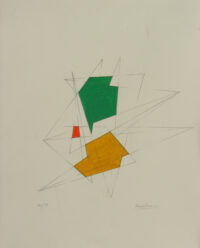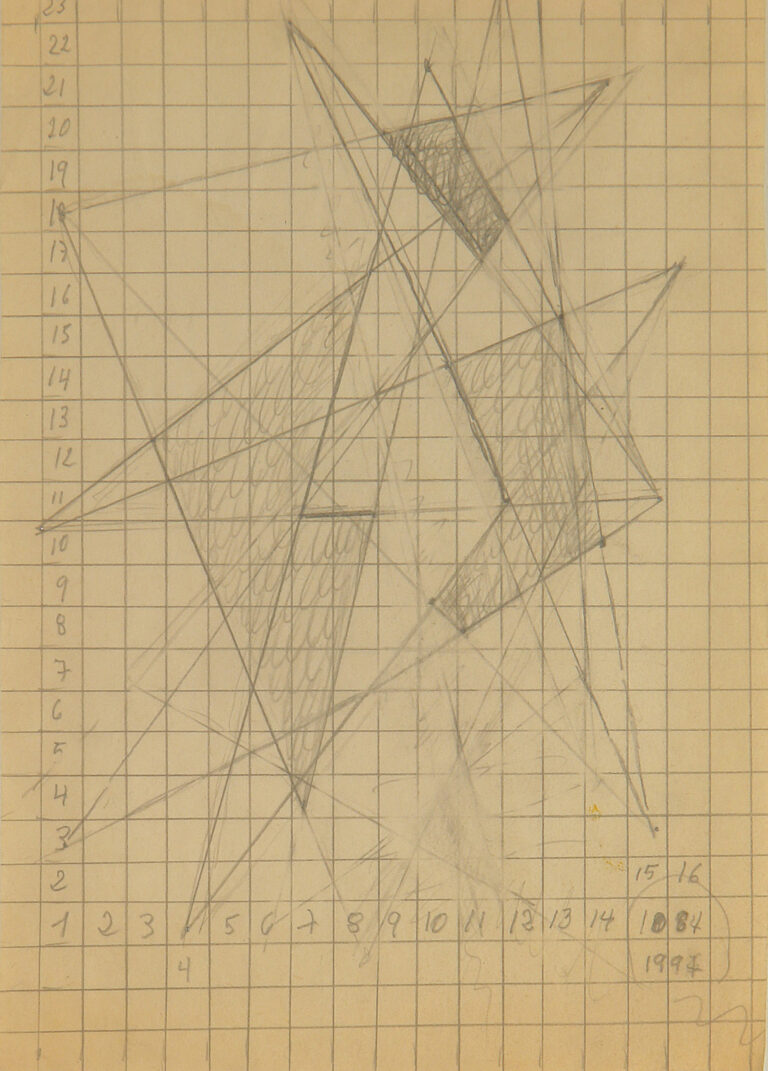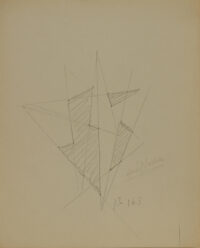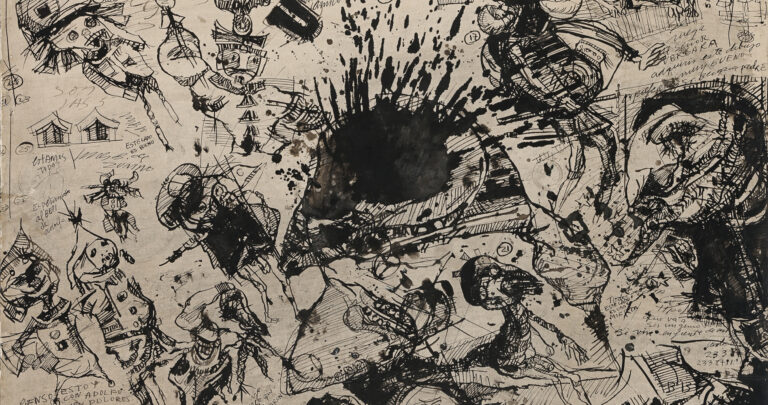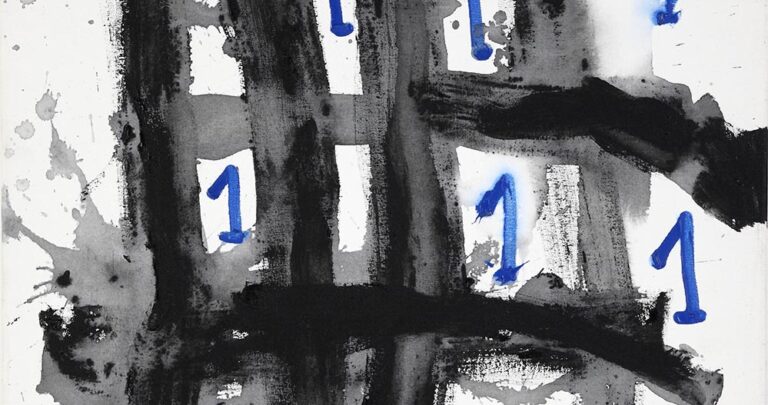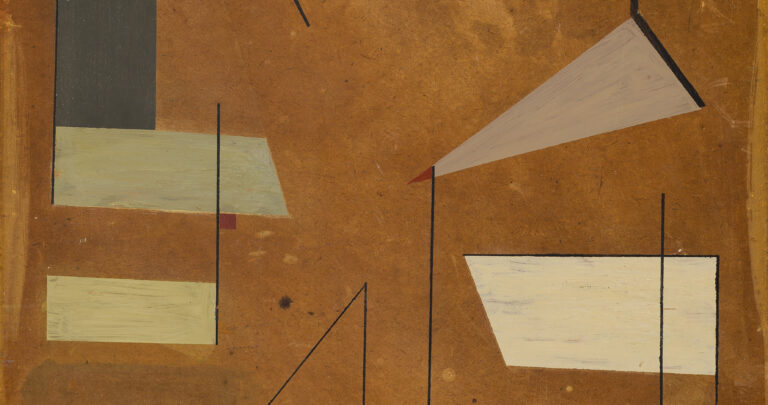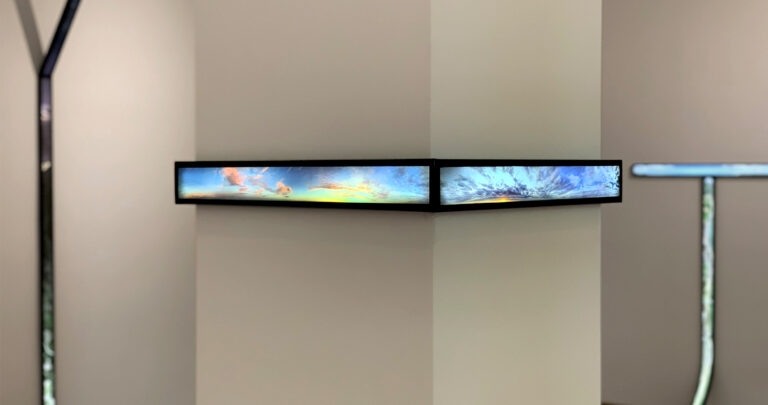biography
Raúl Lozza’s trajectory (Alberti, 1911 – Buenos Aires, 2008) is broad and complex: his beginnings in art were linked to left-wing artistic and intellectual groups since 1930s. His political action within the Communist Party was an important axis in his early artistic search: he published texts and drawings in newspapers and anti-fascist reviews, including La República. He came into contact with the editors of the magazine Arturo – a publication that started the debates around abstraction in the Buenos Aires- and in 1945 he was part of the creation of the Asociación Arte Concreto-Invención (AACI) along with Tomás Maldonado, Edgar Bayley, Alfredo Hlito and Enio Iommi, among others. Lozza participated with his works and gave lectures in the various exhibitions that the group held during the course of 1946.
This AACI established its first investigative line in the resolution of the trimmed frame that had been formulated by Rhod Rothfuss in Arturo. However, the searches did not stop and new art objects emerged from the cut-out frame. In this way, the painting, as a “continent organism” as such was abolished.
However, towards 1947 the AACI considered and tested again the possibilities of the orthogonal framework. It was at this time when Lozza distanced himself from the group to continue investigating the possibilities of the coplanar. It was essential for him to take into account the spatial context where the work was carried out: that is, the color and the wall characteristics. Thus, he redefined his ideas and together with his brothers, and with the collaboration of Abraham Haber, he created the so-called perceptism.
In the First Perceptual Painting Exhibition catalog, held in 1949 at the Van Riel Lozza Gallery, he stated: “Thus, perceptism manifests itself as the highest and most advanced stage of painting. It inaugurates a new era in art, and it differs from the other abstract and concrete schools by the fundamental fact of having achieved for the first time the reality of the color-plane, a new concept of structure embedded in the practical process of the visible means of creation, thus overcoming the contradictions between form and content, the raison d’être of representative art and the nightmare of abstract art”.
Three elements are key in Lozza’s theory: the open structure (projective system governed by centrifugal lines of force on the basis of which shapes are defined), the qualimetry of the flat shape (adjustment system of the synthetic shape-color unit) and the notion of a colorful field that directly involves the architectural wall (5). According to its precise formulations, the ordering system of his production rejects the mythical idea of work as a unique and unrepeatable piece because the artwork is capable of being reproduced. The search for integration of artistic practice in the daily life of modern men was understood by Abraham Haber according to the following terms: “Perceptual painting […] is not an art aimed for a museum, a place where men go, according to a fixed schedule, to seek his ration of aesthetic feelings, but it is an art of environment that must accompany men in his daily center, at home, in public and private buildings, in the means of transport, in the offices, in the workshops and streets, because it must reach men in the manifestation of their reality and not in the exhaust pipe that is a Museum”.*
view more
artworks
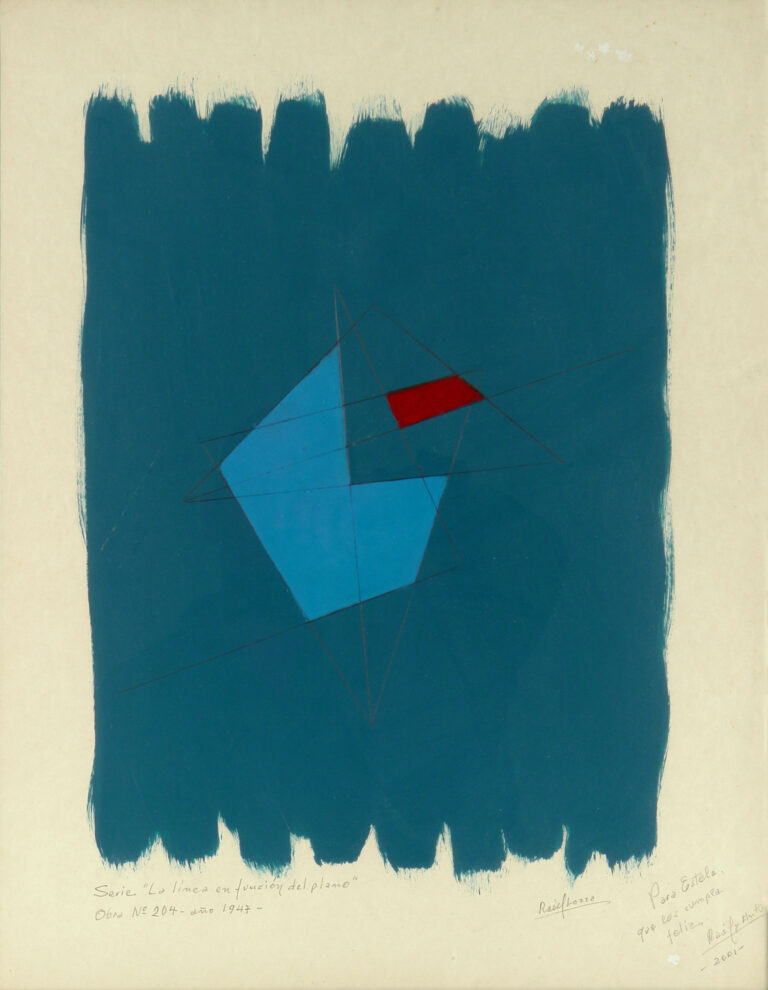
Nº204. Series: La línea en función del plano
Paint and pencil on paper
21.7 x 16.5 in
1947

